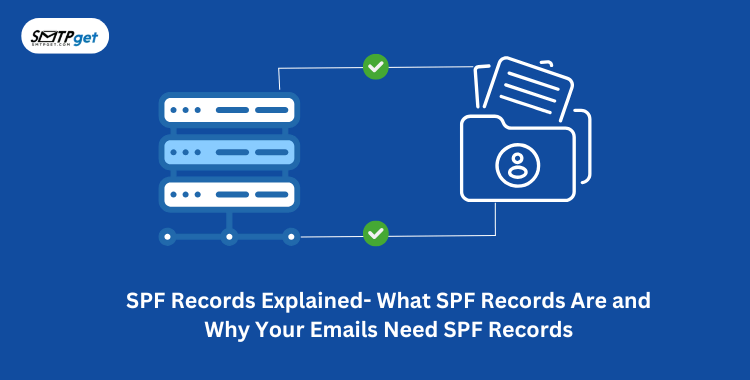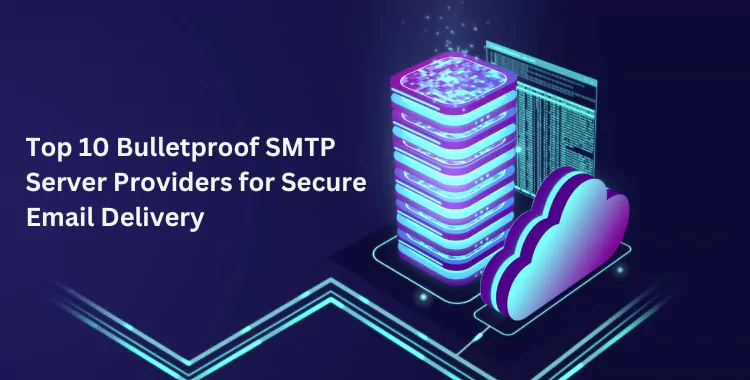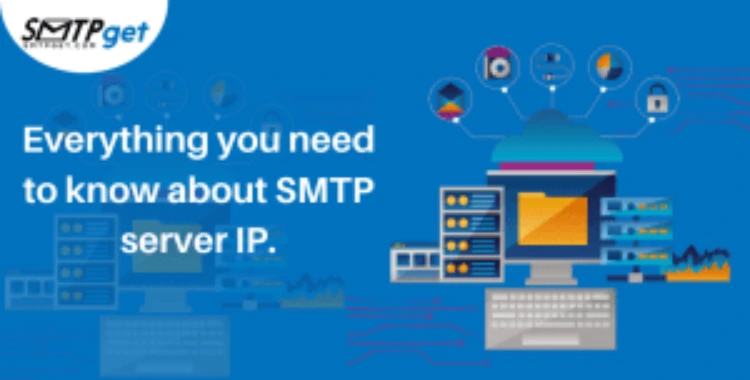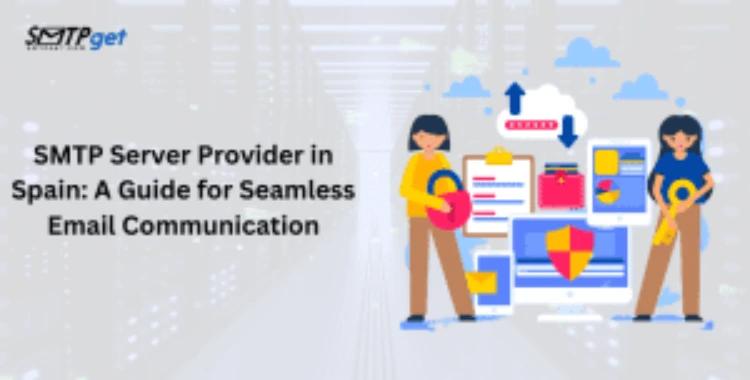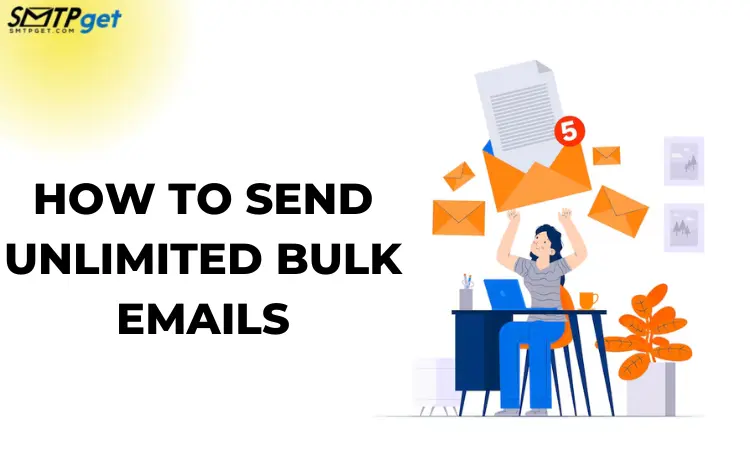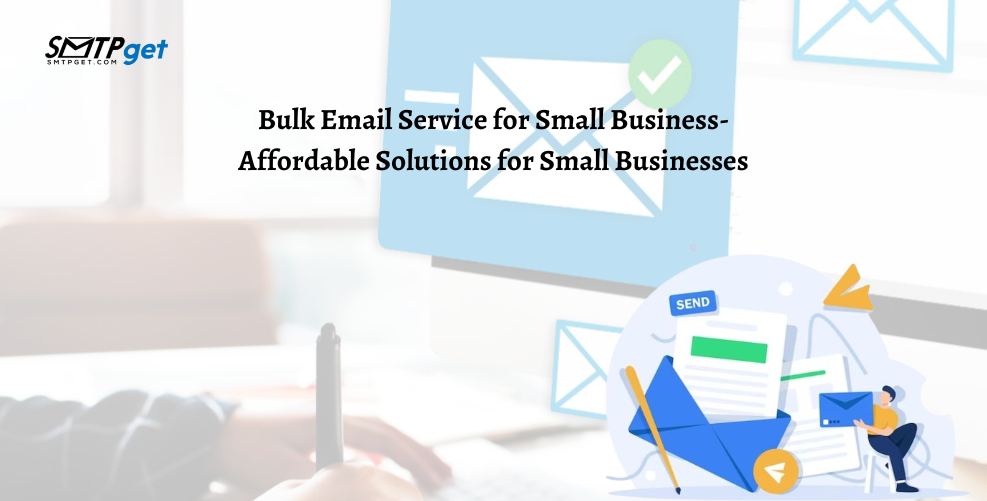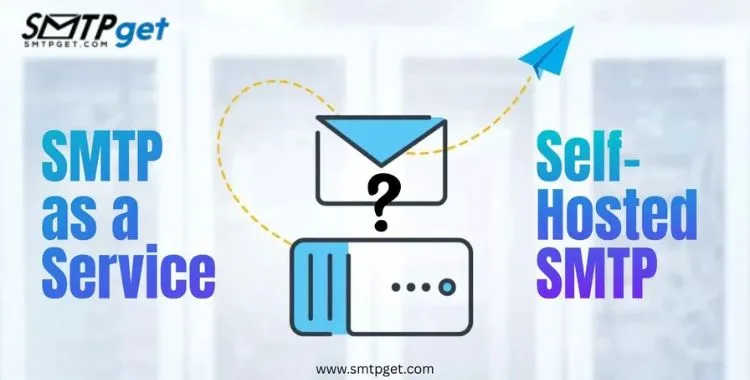SMTP as a Service is a solution that helps businesses send emails reliably and efficiently. With SMTP as a Service, companies don’t need to set up and maintain their email servers. This service provides an easy way to manage email delivery, ensuring that emails reach their recipients without being marked as spam. It offers features like real-time analytics, delivery tracking, and authentication tools to improve email security.
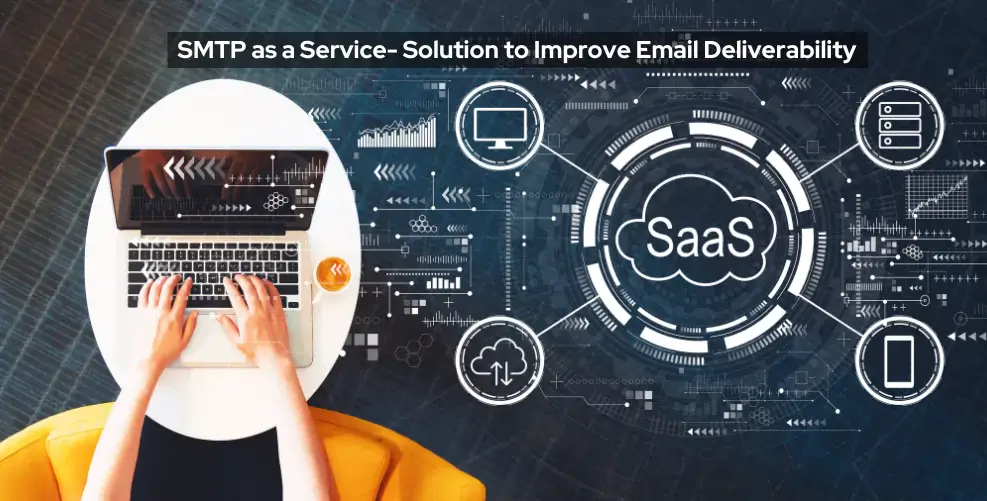
SMTP as a Service is handy for businesses that send many emails, such as newsletters, promotional messages, or transaction confirmations. It saves time and resources, allowing businesses to focus on their core activities while ensuring that their emails are delivered effectively and reliably. Popular SMTP Server providers include SMTPget, DigitalAka, SendGrid, Mailgun, iDealSMTP, and Amazon SES.
Our Pricing Plan:
| Pricing Table | Cheapest Plan | Standard Plan | Professional Plan |
| SMTP Server Services | $110 | $165 | $220 |
| Bulk Email Server | $50 | $145 | $225 |
| Bulk Email Service | $30 | $110 | $220 |
Why do Businesses Need SMTP as a Service?
Businesses need SMTP as a service for several key reasons.
1. Improving email deliverability– Using a dedicated SMTP service ensures that your emails are properly authenticated and less likely to be marked as spam. This means your messages reach your customers’ inboxes reliably, increasing the chances of engagement and conversion.
2. Ensuring email compliance- There are many regulations, such as GDPR and CAN-SPAM, that govern how businesses can send emails. An SMTP service helps manage and comply with these rules by providing necessary tools and features like unsubscribe links and user data management. This not only prevents legal issues but also fosters trust with your audience.
Choosing the Right SMTP Service Provider
When choosing an SMTP service provider, there are several important factors to consider. First, check the reliability of the provider. A reliable service ensures that your emails reach their destination without issues. Next, consider the speed of email delivery. Fast delivery is crucial for time-sensitive messages. Security is another key factor. Look for providers that offer strong encryption and security protocols to protect your emails from unauthorized access.
Scalability is also important; choose a provider that can grow with your needs, especially if you plan to send a large volume of emails. Support is essential as well. Good customer support can help you quickly resolve any problems that arise. Additionally, consider the cost of the service. Make sure it fits your budget without sacrificing quality. Lastly, check for deliverability rates. Providers with high deliverability rates ensure that your emails land in the inbox rather than the spam folder.
Top SMTP providers in the market
Choosing the right SMTP Server as a Service is essential for reliable email delivery. Here are the top SMTP providers in the market:
SMTPget: Known for its user-friendly interface, SMTPget offers affordable plans and advanced features. It’s great for both small businesses and large enterprises.
Mailgun: Popular for its robust API and scalability, Mailgun is ideal for developers and businesses needing high deliverability rates. It provides strong tools for tracking and analyzing data.
iDealSMTP: A reliable choice with a strong reputation, iDealSMTP provides excellent customer support and easy integration with other platforms. It’s great for businesses, no matter how big or small they are.
Amazon SES (Simple Email Service): Known for its cost-effectiveness and reliability, Amazon SES is a top choice for businesses sending large volumes of emails. It works smoothly with other AWS services.
SparkPost: Offers advanced analytics and high deliverability rates, making it a great option for data-driven businesses. Its powerful API is perfect for developers.
Each of these providers offers unique features to meet different business needs, ensuring your emails reach the intended recipients effectively.
Setting up SMTP as a Service
Setting up SMTP for your business email is easy and helps ensure your emails reach your customers. Follow these simple steps:
Choose an SMTP Provider: Select a reliable SMTP service like SMTPget, DigitalAka, or Mailgun.
Sign Up and Log In: Create an account on the chosen SMTP provider’s website and log in.
Get SMTP Credentials: Find the SMTP settings in your account dashboard. Note the server address, port number, username, and password.
Configure Email Client: Open your email client (like Outlook or Thunderbird) and go to account settings. Enter the SMTP server details you noted earlier.
Test the Configuration: Send a test email to check if everything is working. Ensure it’s received without issues.
Secure Your Connection: Enable SSL/TLS encryption in your email client to protect your data.
By following these steps, you can set up SMTP for your business and improve your email communication.
Best practices for configuring SMTP for optimal performance
Configuring SMTP for optimal performance is essential for smooth email delivery. Here are some good ways to do it:
Use a Reliable SMTP Server: Choose a reputable SMTP service provider to ensure your emails are delivered promptly and reliably.
Secure Your Domain: Set up SPF, DKIM, and DMARC records to protect your domain. This helps in verifying your emails and prevents them from being marked as spam.
Monitor Email Sending Limits: Be aware of your SMTP provider’s sending limits to avoid disruptions. Sending too many emails at once can lead to throttling or blocking.
Optimize Email Content: Keep your emails concise and relevant. Avoid excessive images or links that may trigger spam filters.
Maintain a Clean Email List: Regularly update your email list to remove invalid or inactive addresses. This helps keep more people interested and makes sure your emails reach their destination.
Monitor and Analyze Performance: Use analytics tools to track email performance and make necessary adjustments to improve delivery rates.
By following these best practices, you can ensure that your SMTP configuration supports efficient and reliable email delivery.
Integrating SMTP with Email Marketing Platforms
Integrating SMTP with email marketing platforms is a smart way to boost your email campaigns. By connecting it to your email marketing platform, you can improve deliverability and ensure your messages reach the inbox. First, choose a reliable SMTP provider. Many platforms offer built-in SMTP settings, making it easy to connect.

Next, enter the SMTP server details into your email marketing platform’s settings. This includes the server address, port number, and login credentials. Once set up, test the connection by sending a few emails. This integration helps avoid spam filters and improves the chances of your emails being read. Plus, it offers better tracking and reporting, so you can see who opened your emails and clicked on links.
Enhancing email campaigns with SMTP Server as a Service
Enhancing your email campaigns with SMTP Server as a Service can make a big difference. SMTP as a Service offers reliable and efficient email delivery. It ensures that your emails reach recipients’ inboxes without getting lost or marked as spam. By using SMTP as a Service, businesses can improve their email deliverability rates significantly. This service manages the technical aspects of sending emails, like server setup and maintenance, ensuring high reliability and faster delivery speeds. It also provides analytics and monitoring tools to track email performance and engagement. With SMTP as a Service, businesses can focus more on crafting effective email content and less on managing the complexities of email delivery infrastructure, ultimately enhancing their overall email marketing efforts.
SMTP Authentication and Security
By requiring authentication, SMTP servers verify the sender’s identity before accepting and transmitting emails. This process prevents unauthorized users from sending emails through the server, reducing the risk of spam and phishing attacks. Authentication also enhances email deliverability by improving the sender’s reputation.
Email providers trust authenticated emails more, reducing the chances of messages being flagged as spam or ending up in recipients’ junk folders. This reliability is essential for businesses and individuals relying on email communication for professional correspondence and customer interactions. In essence, SMTP authentication safeguards the integrity of email communications, enhances deliverability rates, and protects users from malicious activities, making it a fundamental aspect of secure and effective email delivery systems.
Best practices for securing your SMTP configuration
Securing your SMTP configuration is crucial to protect your email communication from threats. Follow these best practices:
Keep Your Emails Safe: Make sure to use TLS (Transport Layer Security) encryption whenever you send or receive emails. It encrypts your data during transmission.
Authentication: Implement authentication mechanisms like SPF (Sender Policy Framework), DKIM (DomainKeys Identified Mail), and DMARC (Domain-based Message Authentication, Reporting, and Conformance) to verify email legitimacy.
Strong Passwords: Ensure your SMTP server has a strong, unique password to prevent unauthorized access.
IP Filtering: Restrict which IP addresses can connect to your SMTP server to reduce the risk of unauthorized access.
Monitoring and Updates: Regularly monitor your SMTP logs for unusual activities and keep your server software up to date with security patches.
By following these practices, you can enhance the security of your SMTP configuration and safeguard your email communications effectively.
Monitoring and Troubleshooting SMTP Issues
Monitoring SMTP performance is crucial for ensuring reliable email delivery. Several tools simplify this process, enhancing efficiency and troubleshooting potential issues.
SMTP Diagnostics: Provides detailed reports on email delivery status, including bounce rates and delivery times.
MXToolbox: Offers comprehensive SMTP tests and blacklisting checks to identify potential delivery problems.
SendGrid’s Email Testing Tool: Allows testing emails before sending to identify issues affecting deliverability.
Mailtrap: Simulates SMTP servers for testing emails without actually sending them, ensuring flawless delivery.
GlockApps: Monitors email campaigns, providing insights into delivery rates and potential improvements.
These tools empower users to monitor SMTP performance proactively, diagnose delivery issues promptly, and optimize email campaigns for maximum effectiveness. By leveraging these resources, businesses can ensure their emails reach recipients reliably and efficiently.
Troubleshooting Common SMTP Problems
SMTP is crucial for sending emails but can face common issues. One frequent problem is incorrect server settings, which cause emails to bounce or not send. Ensure your SMTP server, port, and login details are set up correctly. Another issue is blacklisting, where your IP address gets flagged for suspicious activities like spamming.
Check if your IP is blacklisted using online tools regularly. Firewall restrictions can also block SMTP traffic. Make sure your firewall allows outbound SMTP connections. Lastly, email size limits can stop delivery. Reduce attachment sizes or use cloud storage links instead. To troubleshoot these issues, check your settings, monitor blacklists, adjust firewall rules, and optimize email size. This ensures your emails are sent smoothly.
Comparing Transactional vs. Marketing Email with SMTP
Emails serve different purposes in communication. Transactional emails are essential for delivering information directly related to user actions, like order confirmations and account updates. They focus on providing necessary details and are usually triggered by a user’s interaction with a website or service. On the other hand, marketing emails aim to promote products, services, or events.
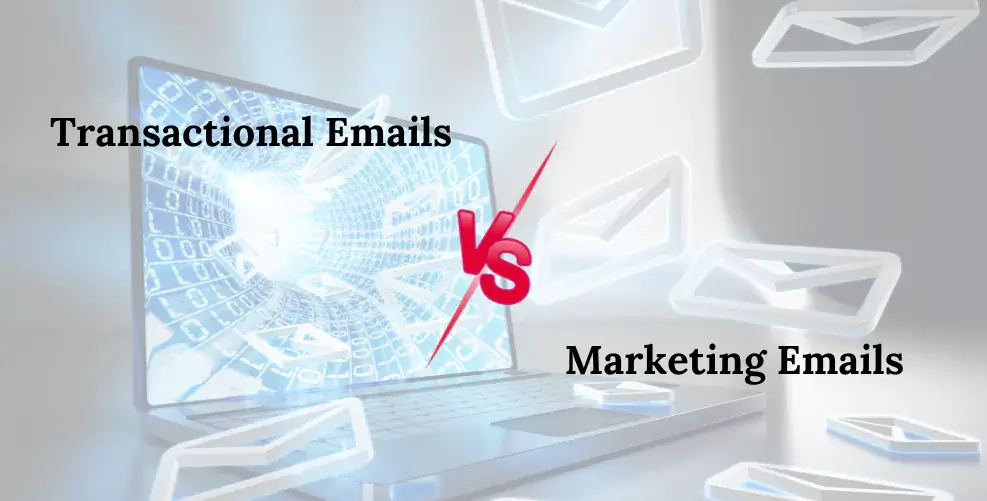
They are designed to attract attention, build brand awareness, and encourage recipients to take specific actions, like making a purchase or signing up for a newsletter. Unlike emails that handle transactions, marketing emails usually have ads and are sent to many people to get them interested and involved. Understanding these differences helps businesses effectively use email as a tool for both customer service and marketing strategies, ensuring that each type of email serves its intended purpose efficiently.
How SMTP can improve the delivery of both types of emails
SMTP plays a crucial role in enhancing the delivery of both types of emails: regular and marketing. For regular emails like personal or business communications, SMTP ensures that messages reach recipients’ inboxes promptly and reliably. It verifies sender authenticity and manages efficient transfer between mail servers, reducing the chances of emails being marked as spam. In marketing emails, SMTP helps maintain the sender’s reputation by following best practices like SPF (Sender Policy Framework) and DKIM (DomainKeys Identified Mail).
These protocols authenticate senders and ensure emails appear legitimate to email providers, improving deliverability rates. SMTP also supports feedback loops that notify senders about email delivery issues, allowing prompt resolution to maintain reliable communication channels. Overall, SMTP’s role in email delivery is vital, ensuring both regular and marketing emails are sent and received effectively, fostering better communication and engagement with recipients.
SMTP Best Practices for Bulk Email Sending
Sending bulk emails via SMTP requires attachment to certain guidelines for effective delivery and compliance. Firstly, ensure your email list consists of opted-in subscribers to avoid spamming. Use a reputable SMTP service provider that supports bulk email sending to manage large volumes efficiently. Craft concise and relevant content to maintain reader engagement and reduce the risk of being flagged as spam. Personalize emails where possible to increase recipient interaction. Implement SPF and DKIM authentication to verify your domain and ensure emails are trusted by recipient servers. Monitor delivery metrics and promptly handle any bounce-backs or unsubscribe requests to maintain a good sender reputation. Following these guidelines promotes successful bulk email delivery while respecting recipient preferences and legal requirements.
Avoiding common mistakes in bulk email campaigns
Running successful bulk email campaigns requires avoiding common mistakes that can hinder your efforts. Firstly, ensure your email list is clean and up-to-date to avoid sending to inactive or incorrect addresses. Personalize your emails to engage recipients and avoid sounding generic or spammy. Another mistake is forgetting to make emails work well on different devices. This can make them hard to read and less likely to get responses. Always test your emails before sending them to check for formatting issues or broken links. Finally, be mindful of spam filters by using relevant and clear subject lines and avoiding excessive use of images or attachments that can trigger them. By addressing these pitfalls, you can enhance the effectiveness of your bulk email campaigns and improve engagement with your audience.
Optimizing Email Deliverability with SMTP
Email deliverability is crucial for successful communication. Using Simple Mail Transfer Protocol (SMTP) effectively can enhance your email reach and reliability. Here are key strategies:
Authenticate: Ensure proper authentication (SPF, DKIM, DMARC) to verify your emails, reducing the chances of them being marked as spam.
Keep Your Lists Fresh: Make sure to regularly clean your email lists by removing addresses that are no longer active or valid. This improves engagement metrics and sender reputation.
Optimize Content: Craft clear, relevant content with minimal use of spam-triggering words and excessive formatting.
Monitor Performance: Keep track of email metrics (open rates, bounce rates) to identify and resolve issues promptly.
Use Reliable SMTP Services: Choose reputable SMTP services that offer secure transmission and good deliverability rates.
By implementing these strategies, businesses can significantly enhance their email deliverability, ensuring messages reach intended recipients effectively.
Leveraging SMTP features for better inbox placement
SMTP is key to ensuring your emails land in recipients’ inboxes instead of spam folders. To improve inbox placement, use these SMTP features:
Authentication: Use DKIM (DomainKeys Identified Mail) and SPF (Sender Policy Framework) to verify your email’s authenticity. This prevents your emails from being marked as spam.
Reputation Management: Monitor your sending IP’s reputation. High volumes of spam reports can hurt your reputation. Tools such as feedback loops help you monitor and lessen complaints.
Rate Limiting: Control the rate at which you send emails. Sending too many at once can trigger spam filters. SMTP allows you to set limits and spread out your emails.
Error Handling: Pay attention to bounce messages. SMTP provides detailed error codes that help you understand why an email failed and fix the issue.
By using these SMTP features, you can ensure better email delivery and higher chances of reaching your audience’s inboxes.
Data Privacy and GDPR Compliance with SMTP
When using SMTP, it’s crucial to prioritize data privacy and comply with GDPR (General Data Protection Regulation) rules. Start by securing email content and recipient information with encryption to prevent unauthorized access. Ensure that personal data such as names and email addresses are handled securely and only used for lawful purposes. Implementing strong authentication measures, like SPF (Sender Policy Framework) and DKIM (DomainKeys Identified Mail), helps verify senders and protect against spoofing. Regularly update your SMTP software to address security vulnerabilities and maintain GDPR compliance. By adopting these practices, businesses can safeguard sensitive information, uphold user trust, and adhere to legal requirements, ensuring a safer and more compliant email communication environment.
Best practices for handling customer data securely through SMTP
When using SMTP (Simple Mail Transfer Protocol) to send customer data, follow these best practices for security:
Encryption: Always encrypt emails using TLS (Transport Layer Security) to protect data during transmission.
Authentication: Use mechanisms like SPF (Sender Policy Framework) and DKIM (DomainKeys Identified Mail) to verify senders and prevent spoofing.
Access Control: Limit access to SMTP servers and ensure strong authentication methods for users.
Data Minimization: Send only necessary customer data through emails to minimize exposure.
Monitoring: Regularly monitor SMTP logs for unusual activities or unauthorized access attempts.
By implementing these practices, businesses can enhance the security of customer data transmitted via SMTP, reducing risks of unauthorized access and data breaches.


